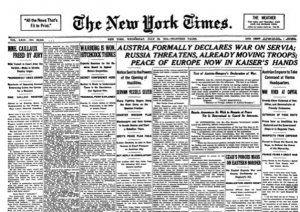
By Joe Sinagra | The Save Jersey Blog
 As the Internet replaces print journalism, Save Jerseyans, those in media who don’t adjust might not survive too much longer; you either learn to adapt or pack it in.
As the Internet replaces print journalism, Save Jerseyans, those in media who don’t adjust might not survive too much longer; you either learn to adapt or pack it in.
I watched a composing room department of 120 printing tradesman dwindle to a staff of 30 having started out in the printing trades. As certain jobs within the newspaper trade became scarce, the competition became fierce as job shops became almost non-existent along with apprenticeship programs disappearing.
After working in printing for over 30 years and following a layoff in 1999 as a Commercial Printing Plant Manager, I could see the direction the print industry was taking. The commercial graphic print industry was declining with the advent of new technologies, and I decided in 2001 to take a new path completely.
Many reporters could be going the way of their typewriters or desktop soon, and if they don’t switch directions, may find themselves at the bottom of the La Brea Tar Pits.
Matt Rooney gave you his take on the Star-Ledger’ plight on Friday. It’s an industry-wide problem. Reporter and correspondent positions are expected to decline by 8 percent over the current decade, from 51,900 jobs in 2010 to 48,000 in 2020, representing a total of nearly 4,000 jobs lost.
The Department of Labor claim that, owing of the trend of consolidation of media companies and the decline in readership of newspapers, reporters will find there are fewer available jobs.
Desktop publishing helped organizations avoid the cost and complications of using large printing presses for printing everything from advertisements to magazines. Some desktop publishers may still design layouts with computer software for newspapers, books, and other printed media, but the printing party has come to an end.
Desktop publisher jobs are expected to decline by 15 percent by 2020.
User-friendly desktop publishing software allows many to perform the tasks desktop publishers do now, making automation yet another factor leading to job loss.
Daily U.S. newspapers have lost 40 per cent of their readership in the last 20 years. Twitter, Vine and tumblr have made things difficult for the print media. The younger generation uses Twitter as news feed. Researchers have recorded two billion tweets worldwide in two and half days.
Over the last five years, the amount of digital information worldwide had increased almost 2,000 per cent exceeding 2.8 trillion gigabytes.
Data from eMarketer shows how quickly the print industry is losing its audience. In 2010, people spent 9% less time reading newspapers and magazines as compared to 2009 while in 2009, they already spent 12% less than in 2008, newspapers seem to be losing both readers and readers’ patience.
The average American spends more than two and a half hours online and over four hours of TV and video consumption compared to only thirty minutes reading newspapers and twenty minutes reading magazines per day.
While not exactly dying, printing is becoming more of a niche market.
Consider the fact that when you read a newspaper, you are reading yesterdays news, and the printing and distribution operation is expensive and cumbersome. Readers can receive the news as it happens and download news content in a matter of seconds online.
The newspaper industry is little more than half the size it once was. Print advertising fell for a sixth consecutive year in 2012 by $1.8 billion, or 8.5% even in a slowly improving economy.
With revenue declining at an average annual rate of 6.2 percent in the five years to 2012, the printing industry as a whole is in decline. In 2012 alone it fell 2 percent to an estimated $76.6 billion.
The printing industry is highly fragmented, with privately-owned firms comprising the majority of commercial printers.
Moving “online” is not yet an answer for newspapers. Digital advertising, now up to 15% of total newspaper ad revenue, has grown anemically the past two years and does not come close to covering print ad losses. (The 2012 ratio was 15 print ad dollars lost for every digital ad dollar gained.)
Although a great majority of newspaper organizations are profitable on an operating basis, many companies continue to struggle with debt and pension obligations assumed in better times.
Newspapers are abandoning headquarters buildings that helped anchor down towns in favor of smaller, less expensive offices or renting their space to other business.
Plant closures have caused industry employment to fall at an average of 4.5 percent annually to 463,904 employees in the five years to 2012, and the printing industry is projected to continue its decline, (at a slower pace) to 2017.
Papers continue to reduce traditional newsroom staff with smaller expansion on the digital side as we witnessed this past week at The Star Ledger.
As those headquarters give way to less staff, it becomes harder to find reporters and photographers to cover news events. Often time you are asked to submit photos for publication. Former reporters and photographers may wind up in a pool and get called out on an as needed basis by media publications.
Again, print will still be around – just not in the way we are used to it.
Could it be that newspapers in particular, as they move online, will become the new wave of digital pay media?
Even if the digital newspaper format succeeds, the industry will continue to struggle as digital media replaces paper products. Unfortunately, it also won’t help revive the jobs of 167 Newark Star Ledger employees or the other 124 employees of NJ Advance Media’s weekly publications.



Washington Times and NY Post don’t seem to have a problem. That could be a valuable hint to the horde of quill-wielding leftist douches around the country…
Washington Times and NY Post thrive because there are still many dinosaurs and reactionaries still holding on to support them
I’ve given up on the star ledger except for Sinday and the Thursday coupons
Can yyou find anything that could punch holes inn it.
Attendants unfurled their banners, Gathered musicians played fair, Acrobats and magicians played “Dare to Dare. and so was king Duncan in Shakespeare’s cursed play Macbeth.